In this Article
Toggle
They packed up their worldly possessions, kissed their loved ones goodbye, and set off for a new land with big dreams. But before the European, Russian, and Meditteranean immigrants arriving at Ellis Island could begin a new life in America, they had to pass basic health and other tests to ensure they wouldn’t become a tax-payer liability. Although it closed in 1954, Ellis Island was reopened in 1976 and is now home to the Museum of Immigration. From where it’s located to the first immigrant processed, from why did they come to how long does it take to visit, these are the answers to all of your Ellis Island questions.
Hotels.com asked me to share my experience visiting Ellis Island in New York.
As the 305-foot woman holding a lantern high above her head in the Hudson River came into view, the huddled masses yearning to breathe free who had just spent a week tossing at sea in steerage class must have been overcome with emotion. But after saving half a year’s wages for a third class ticket, packing their most prized possessions, and bidding farewell to the loved ones who remained behind, they still had one final hurdle to cross before they could start a new life in the United States.
In the Statue of Liberty’s shadow, immigrants arriving on steam ships from ports throughout Europe had to pass through immigration at Ellis Island before entering the country. During the six decades it was open, more than 12 million immigrants were processed through Ellis Island immigration. In fact, roughly 40% of all Americans can trace at least one ancestor to Ellis Island. Are you one of them?
Sage Advice: Whether you stay in Midtown, the Upper East Side, Queens, or another part of town, you can find the perfect accommodation for your Big Apple adventures with one of these fabulous hotels in New York City.
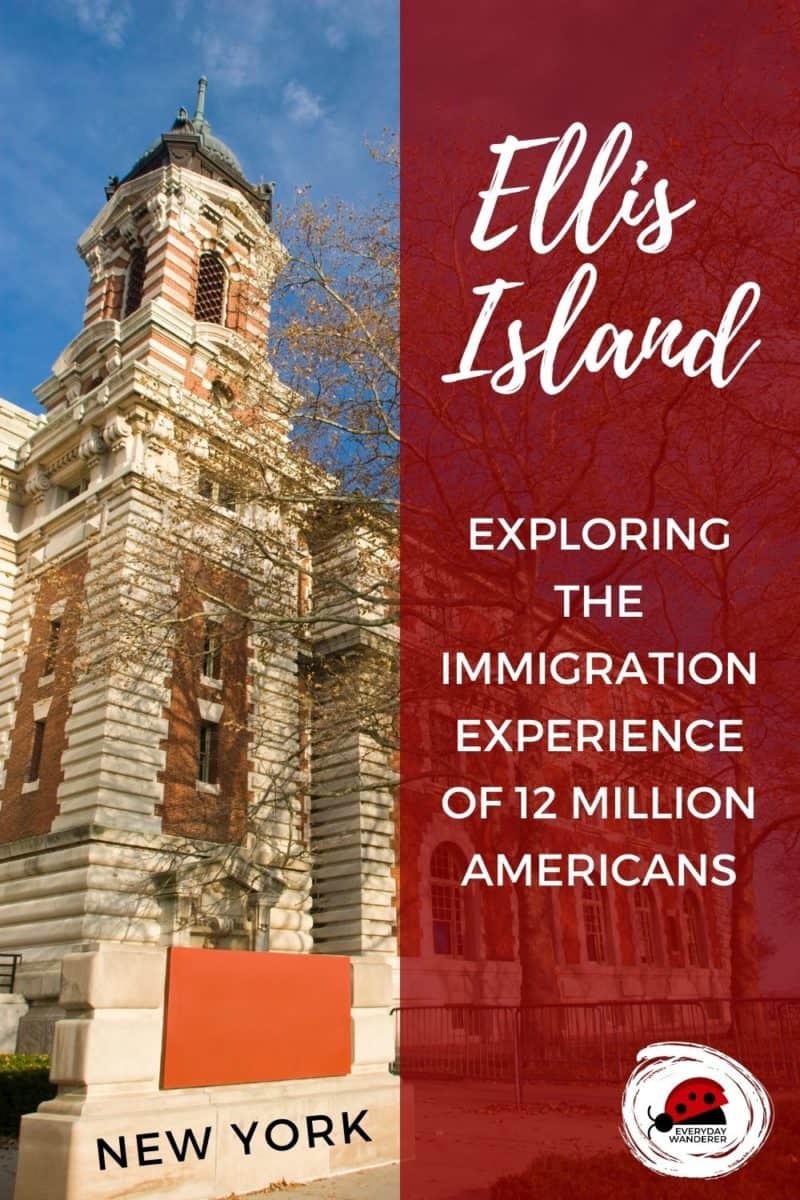
To help offset the costs of running EverydayWanderer.com, you’ll find affiliate links lightly sprinkled throughout the site. If you choose to make a purchase via one of these links, there’s no additional cost to you, but I’ll earn a teeny tiny commission. You can read all of the legal blah blah blah (as my little niece says) on the full disclosure page.
What is Ellis Island?
Ellis Island is a federally-owned island in the blue-grey waters of the Hudson River that flows between New York and New Jersey. Standing in the shadow of the Statue of Liberty’s left shoulder, it was once the busiest immigration station in the United States. With approximately 12 million immigrants arriving in America, it is estimated that 40% of Americans can trace at least one ancestor to Ellis Island. Today, visitors can explore the National Museum of Immigration on Ellis Island.
Sage Advice: To visit the top attractions in New York (including Ellis Island) for less, check out the New York CityPASS. Just how much will you save? I did the math!

How Did Ellis Island Get Its Name?
For hundreds of years, before Europeans began arriving in North America by the boatload, the Mohegan Tribe called the island Kioshk, or Gull Island, as a nod to the large numbers of seagulls who made their home there. In the 1770s, New York merchant Samuel Ellis purchased the island to build a tavern for local fishermen. When Ellis’s heirs sold the island to the State of New York in 1808, the name stuck.
How Big is Ellis Island?
Ellis Island was originally just three acres. Using landfill to expand its footprint in the Hudson River, it’s been expanded nearly ten-fold to its current 27.5-acre size.

What State is Ellis Island In?
Since Ellis Island is, well, an island, it’s natural to be curious about what state Ellis Island belongs to. But the answer isn’t simple. It depends where you are on the island. And if you look at the satellite view provided by Google maps, you’ll see a dotted white border line criss-crossing the island as jurisdiction bounces back and forth between New York and New Jersey.
The large building on the northern rectangle of Ellis Island that houses the National Museum of Immigration is built on the island’s original three-acre footprint and is part of New York. But the rest of the island, built up from landfill over the years to reach its current 27.5-acre size, is considered part of New Jersey. And just when you have that straight, remember that Ellis Island is federally owned.
When Did Ellis Island Open?
When Ellis Island opened its doors on New Year’s Day in 1892, immigrants filling three large ships waited patiently to disembark. Approximately 700 people passed through Ellis Island that first day, and nearly 450,000 immigrants arrived through Ellis Island that first year.
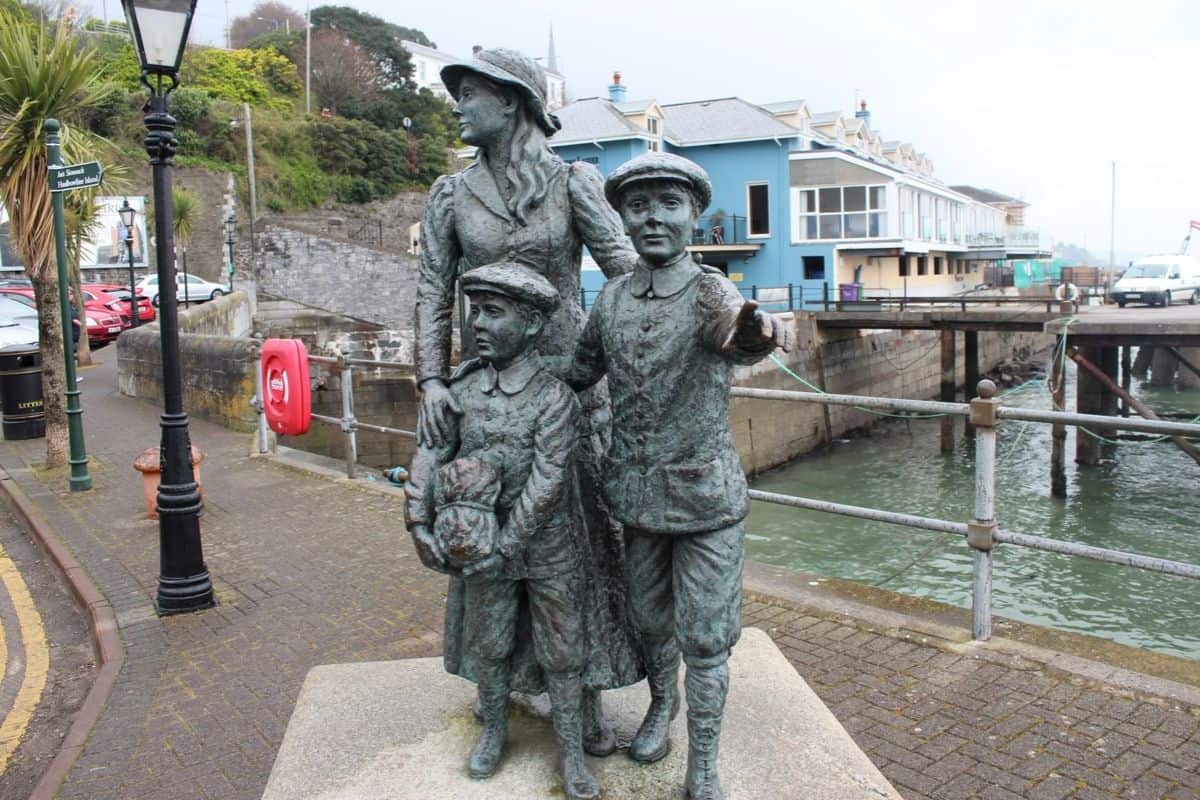
Who Was the First Immigrant to Arrive at Ellis Island?
The first immigrant processed at Ellis Island on January 1, 1892, was an Irish teenager from County Cork. At just 15-years-old, Annie Moore made the treacherous 11-day trip across the Atlantic Ocean aboard the S.S. Nevada with her younger brothers, Anthony and Phillip, so they could be reunited with their parents who had arrived in New York a year earlier. On Ellis Island and in County Cork, Ireland, you’ll find statues celebrating Annie as the first immigrant to arrive at Ellis Island.

Why Did Immigrants Come to Ellis Island?
From the first Pilgrims who landed at Plymouth Rock to the present day, immigrants fleeing the horrors of war, devastating famines, crumbling economies, and persecution have flocked to the United States in search of a better life for themselves and their children. And so it was at Ellis Island. Approximately 12 million European, Mediterranean, and Russian immigrants were processed through Ellis Island as they came to America in search of a better life.
What Famous Americans Immigrated Through Ellis Island?
Several of the most notable entertainers, entrepreneurs, athletes, and writers immigrated to the United States through Ellis Island. They include:
- Irving Berlin, the composer credited with songs like “God Bless America” and “White Christmas,”
- Entertainer Bob Hope,
- Lebanese-born poet Khalil Gibran, best known for The Prophet,
- Actor Bela Lugosi, the original Dracula,
- Film director and producer Frank Capra,
- Cosmetics company founder Max Factor, and
- Five-time Olympic gold medalist Johnny Weissmuller
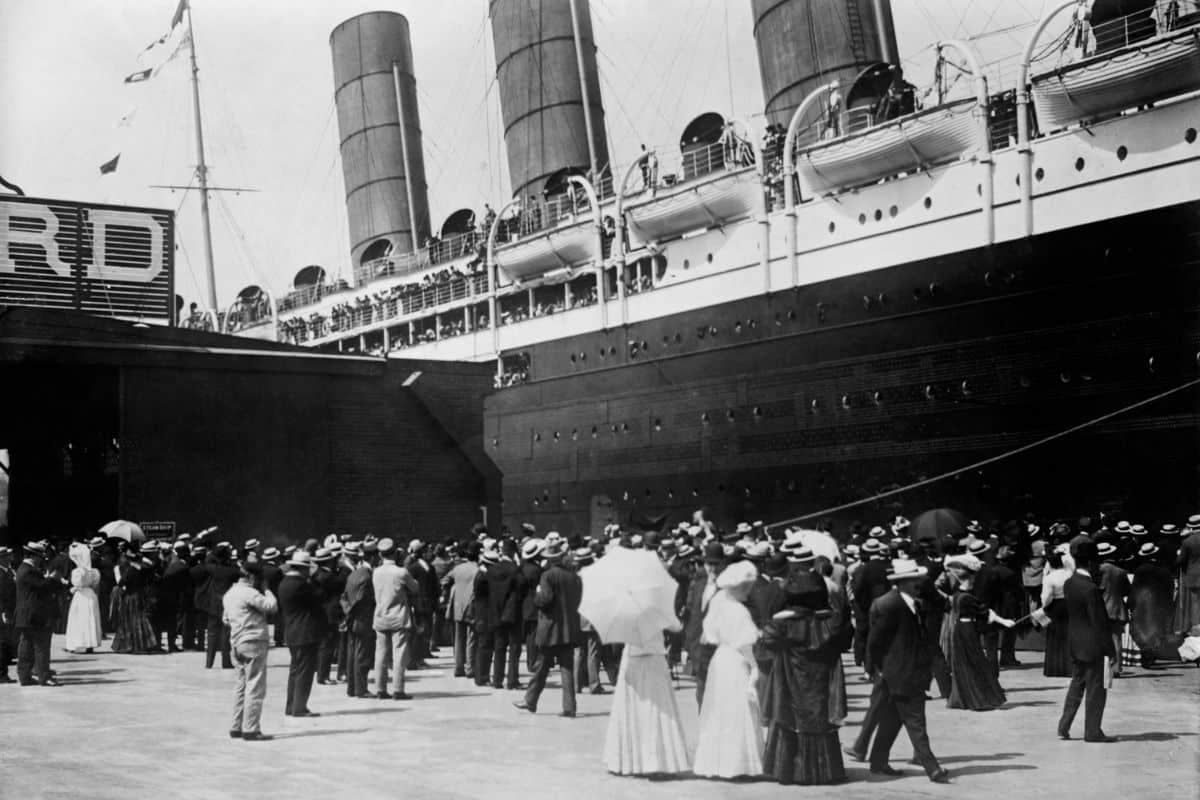
How Long Was the Trip to Ellis Island?
From the western coast of Sweden to the ankle of Italy’s boot, ships set sail for Ellis Island from nearly every major European port. By the end of the 1800s, it took anywhere from five to 12 days to travel across the Atlantic Ocean by boat, depending on the port of departure and weather conditions. And before they could board, including climbing into the bowels of the boat in steerage class, immigrants would first need a pre-paid ticket (often equivalent to six months salary) and to travel to a port city. Neither of which was easy for poor and working class immigrants living in war-torn regions facing economic hardships.
Related Article: From North German Ports to the Americas: Migration in the 19th and 20th Century
What Happened to Immigrants When They Arrived at Ellis Island?
For passengers who traveled to American with first and second-class tickets, the Ellis Island immigration process was completed aboard the ship. Because their more expensive tickets suggested they were less likely to become a public charge due to economic or medical reasons, they were allowed to disembark and immediately go about their lives in America.
For steerage-class passengers, who had just spent five to 12 days tossing about in the belly of the ship as it steamed across the Atlantic Ocean, the Ellis Island immigration process was more involved. First, they were ferried out to Ellis Island. Then they spent many hours winding through long lines where they were evaluated for entry into the country.

With a reference number that linked them to their ship’s manifest and holding the questionnaire they were given on board, immigrants were evaluated for health conditions, literacy, and ideology. (Polygamists and anarchists need not apply.) By the early 1900s, physicians evaluating immigrants on Ellis Island had developed a coding system. Chalk marks placed on the immigrant’s clothing indicated suspected conditions that warranted further evaluation. For example, and “H” indicated suspected heart trouble.
However, one display at the National Museum of Immigration detailed how immigrants would stealthily brush off the chalk or remove and carry their coats while tucking the chalk mark inside where it wouldn’t be noticed. Due to limited space, doctors focused on the most serious health issues, and only about 10 percent of the immigrants arriving at Ellis Island were marked for further inspection.
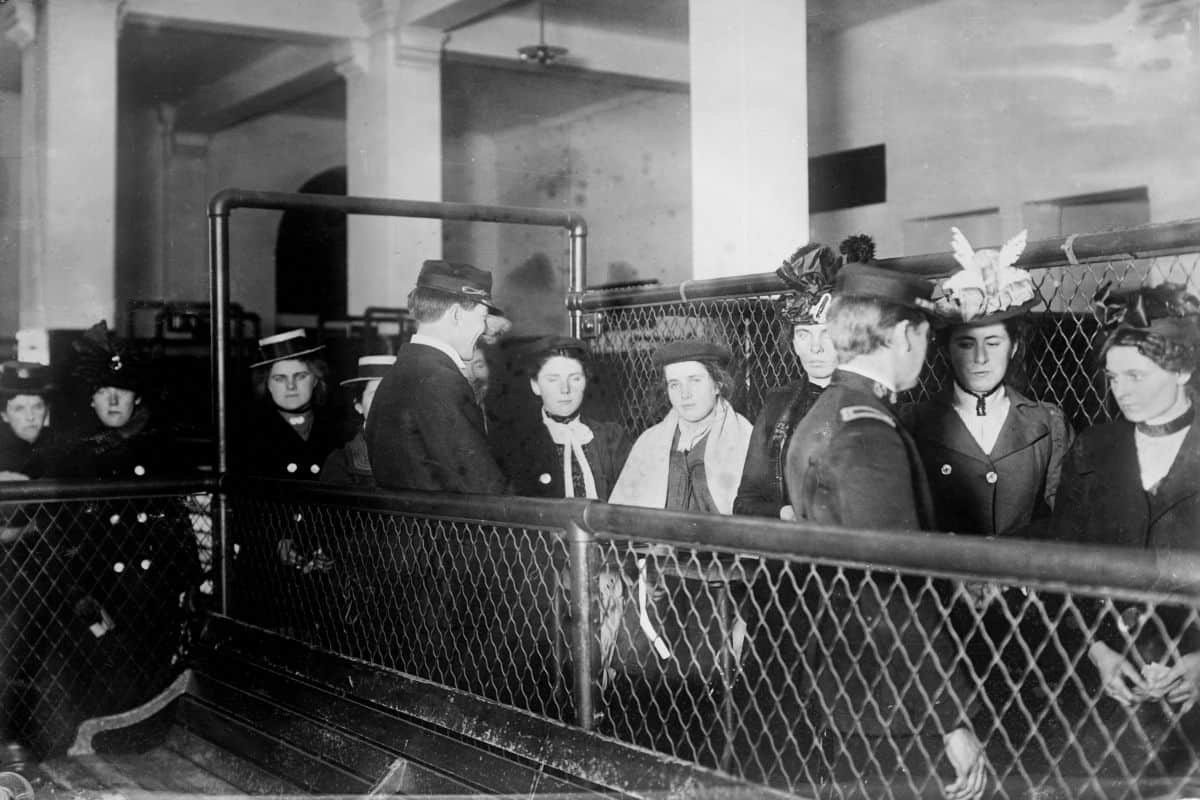
How Long Did It Take to Pass Through Ellis Island?
Most people spent three to five hours going through immigration processing at Ellis Island, with no overnight stays and no meals served.
How Many Immigrants Were Processed Daily at Ellis Island?
Open from 1892 to 1954, the peak of Ellis Island’s operation was from 1900 to 1914, with an average of 1,900 people processed at the immigration station daily. But the all-time daily high was six times that average, reached on April 17, 1907 when 11,747 immigrants were processed on Ellis Island.
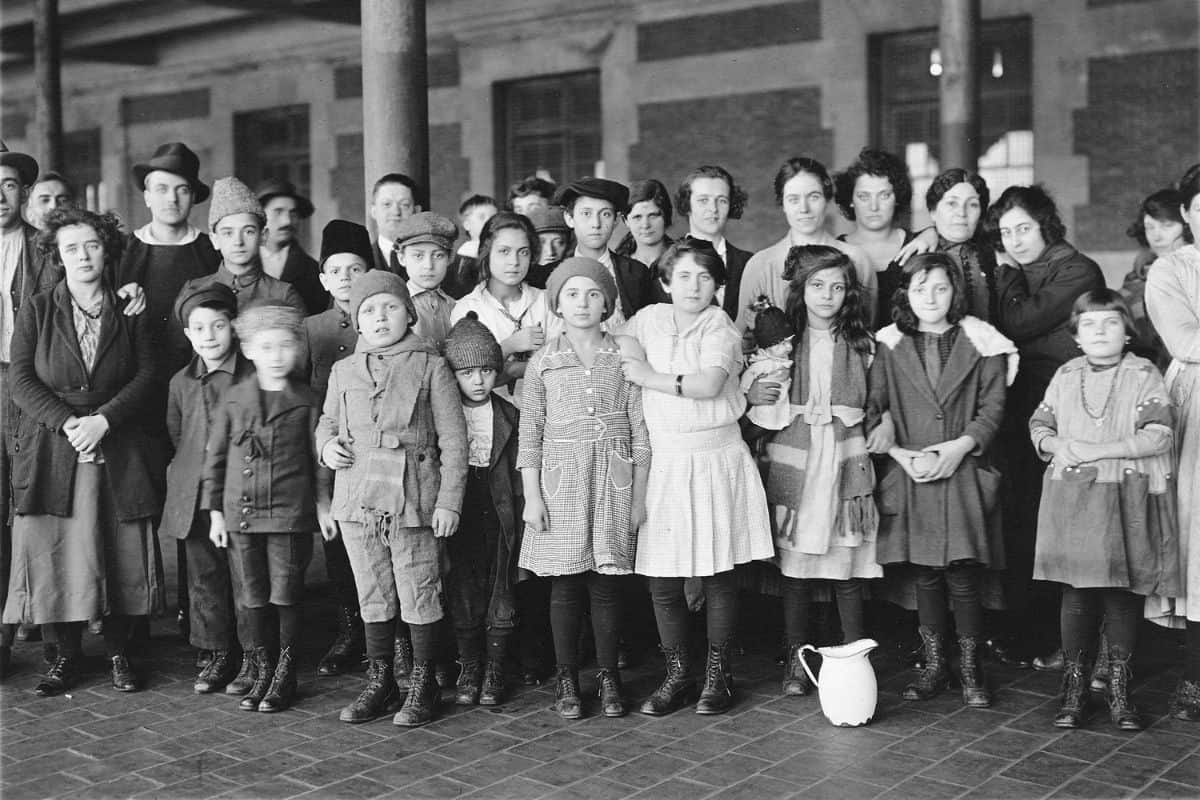
Were Children Separated from Their Parents at Ellis Island?
Immigrants arriving at Ellis Island were asked to queue up in two separate lines. Women and children (including boys under age 15) were in one line and men in another. While children under 15 remained with their mothers or female adult guardians throughout the Ellis Island immigration process, at some point, evaluators would ask others holding babies to set them down. This was done to evaluate if the child could crawl or walk based on their age. Not only were children not separated from their parents at Ellis Island, a federal law passed in the early 1900s prohibited children without adults from arriving in the United States.

How Many Italian Immigrants Came through Ellis Island?
By the 1920s when immigration from Europe began to slow, more than four million Italians had come to America through Ellis Island, comprising more than 10 percent of the country’s foreign-born population.
What Did Italians Call Ellis Island?
Immigrants from Italy and many other nations called Ellis Island “The Island of Hopes and Tears.” Why? Because while each person was hopeful for a chance to move to America and discover more opportunities than they were leaving behind on the other side of the Atlantic Ocean, not everyone was allowed to leave Ellis Island for New York, New Jersey, or another state in the nation. So for the two percent of hopefuls turned away at Ellis Island, it was also a tearful experience.
How Many Immigrants Came Through Ellis Island?
Between 1892 and 1954, approximately 12 million immigrants arrived in the United States via Ellis Island. In fact, it is estimated that 40% of Americans can trace at least one ancestor to Ellis Island.

What Countries Were Immigrants to Ellis Island From?
Ellis Island immigrants arrived from countries throughout Europe as well as non-European Mediterranean nations like Turkey, Syria, and Lebanon. The most immigrants came from Germany, Ireland, and Italy.

How Many Babies Were Born on Ellis Island?
After the Ellis Island hospital opened in March 1902, 350 babies were born on Ellis Island.
How Many Immigrants Were Turned Away at Ellis Island?
With a nickname like “The Island of Hopes and Tears,” it would be easy to imagine large numbers of immigrants being turned away at Ellis Island and loaded up on the next ship back to Europe. However, only two percent of the 12 million people who arrived in the country via Ellis Island were turned away.

How Many Immigrants Died on Ellis Island?
Over the years it was in operation, approximately 3,500 immigrants died at Ellis Island.
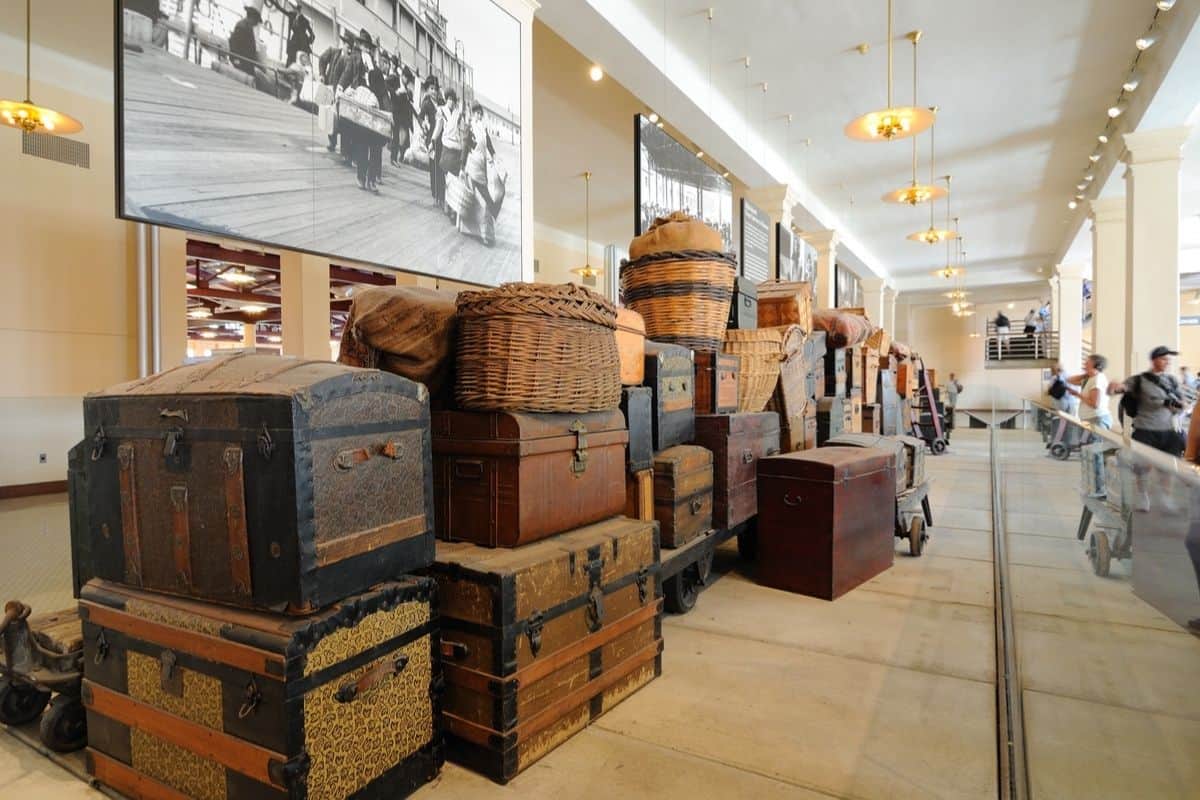
What Did Immigrants Bring with Them to Ellis Island?
Because they were leaving their homelands behind in search of a new life in America, immigrants brought necessities — like clothing, household goods, and tools — plus cherished possessions — like family heirlooms, and photographs.
What Did Immigrants Do After Ellis Island?
Like visitors today who return to the mainland at either Battery Park in New York or Liberty State Park in New Jersey, new immigrants had similar choices. Once stamped for entry into the United States, new immigrants would take a boat to either New York or New Jersey. From there they would begin their new life in America or travel elsewhere in the nation, usually by train.
When Did Ellis Island Close?
In November 1954, all 33 structures on Ellis Island were officially closed.
Why Did Ellis Island Close?
As the United States entered World War I and due to a series of immigration acts signed in the early 1920s, the United States started closing its immigration floodgates. These actions lowered the overall number of immigrants allowed into the United States, with an added emphasis on reducing the number of immigrants allowed from southern and eastern European nations — like Italy, Greece, Bulgaria, and Romania — in order to ensure the United States remained a nation of predominantly Northern and Western European descent.
Around 1924, Ellis Island was transitioned from an immigrant processing center to a detention and deportation center, and by the 1930s, it was used almost exclusively for this purpose. Ellis Island closed in November 1954.
What Was Ellis Island Used for During World War II?
During World War II, Ellis Island held approximately 7,000 detainees, and the Ellis Island hospital was used to care for wounded soldiers.
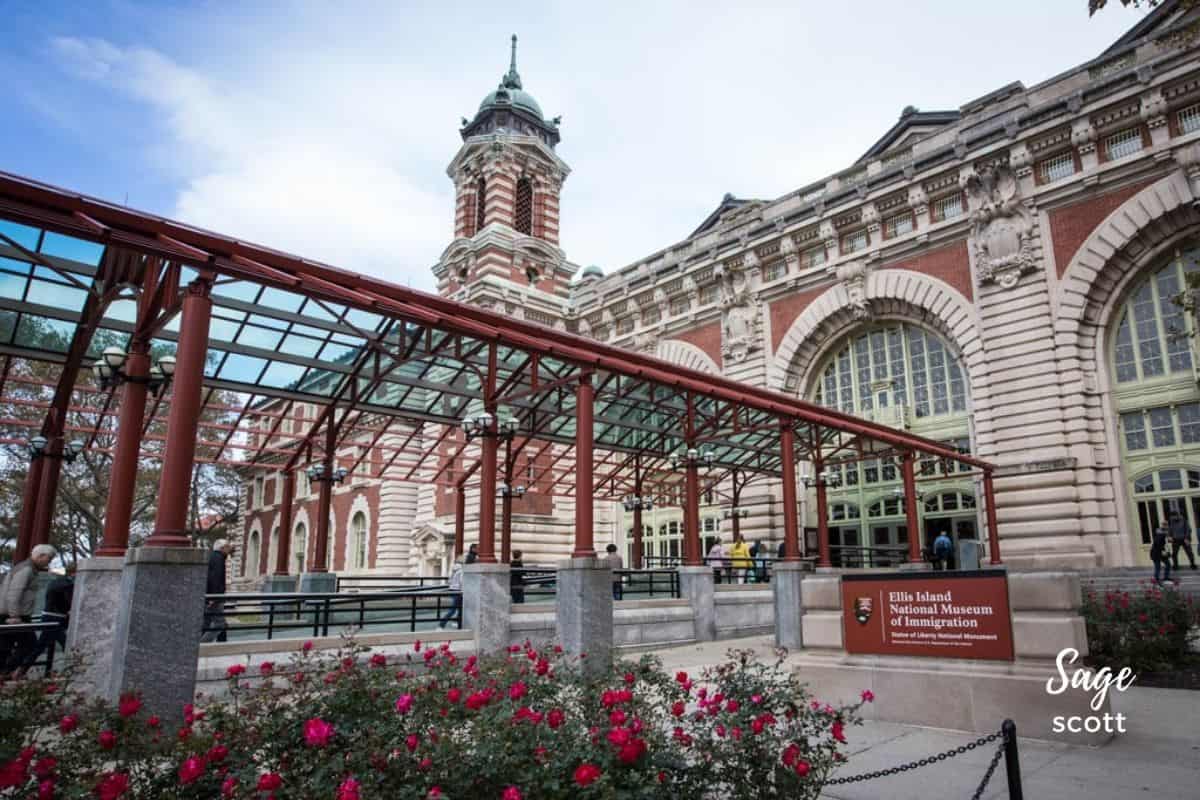
What is Ellis Island Used for Today?
After closing in November 1954, Ellis Island reopened to the public in 1976. When you visit Ellis Island today, you can tour the Museum of Immigration housed in the restored Main Arrivals Hall featuring exhibits showcasing America’s immigration history from the 1500s to today.
Who Owns Ellis Island?
Ellis Island has been federally owned since 1808 when it was purchased from New York merchant Samuel Ellis’s heirs.
How Can I Find Ancestors through Ellis Island?
Millions of immigrant arrival records were made public in 2001 and can be easily searched online at The Statue of Liberty — Ellis Island Foundation website. When you visit, you’ll see a passenger search bar incorporated into the top of the page. Enter the name of your relative into the designated fields, and once you find the correct entry, you can see the passenger record, ship information, and ship manifest related to their entry via Ellis Island.
Note: Due to a fire that ripped through the island on June 15, 1897, you may have a difficult time finding the records of relatives who immigrated through Ellis Island prior to that date since all records dating back to 1840 were destroyed.
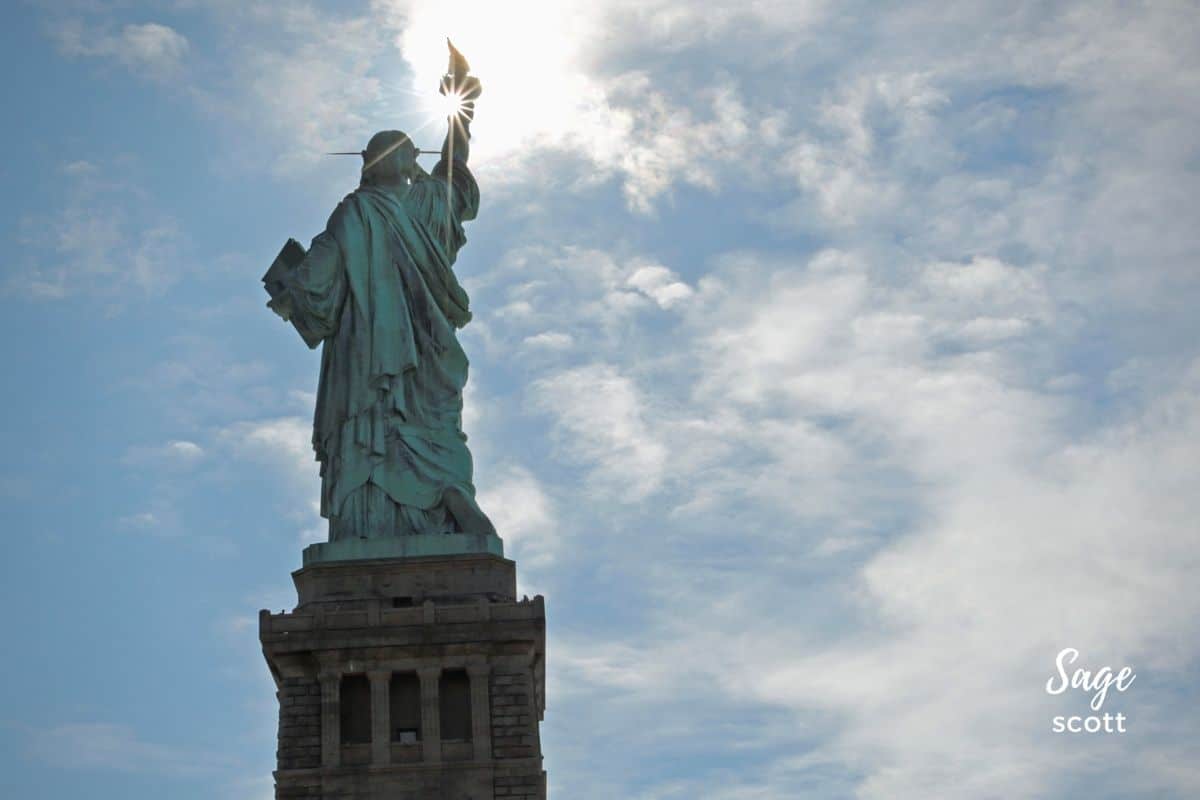
Is the Statue of Liberty on Ellis Island?
No, the Statue of Liberty stands tall, clutching a tablet in her left hand and raising a torch high above her head, on nearby Liberty Island just south of Ellis Island. A ferry is required to visit either Liberty or Ellis Island, and passage to both is included in one ticket.
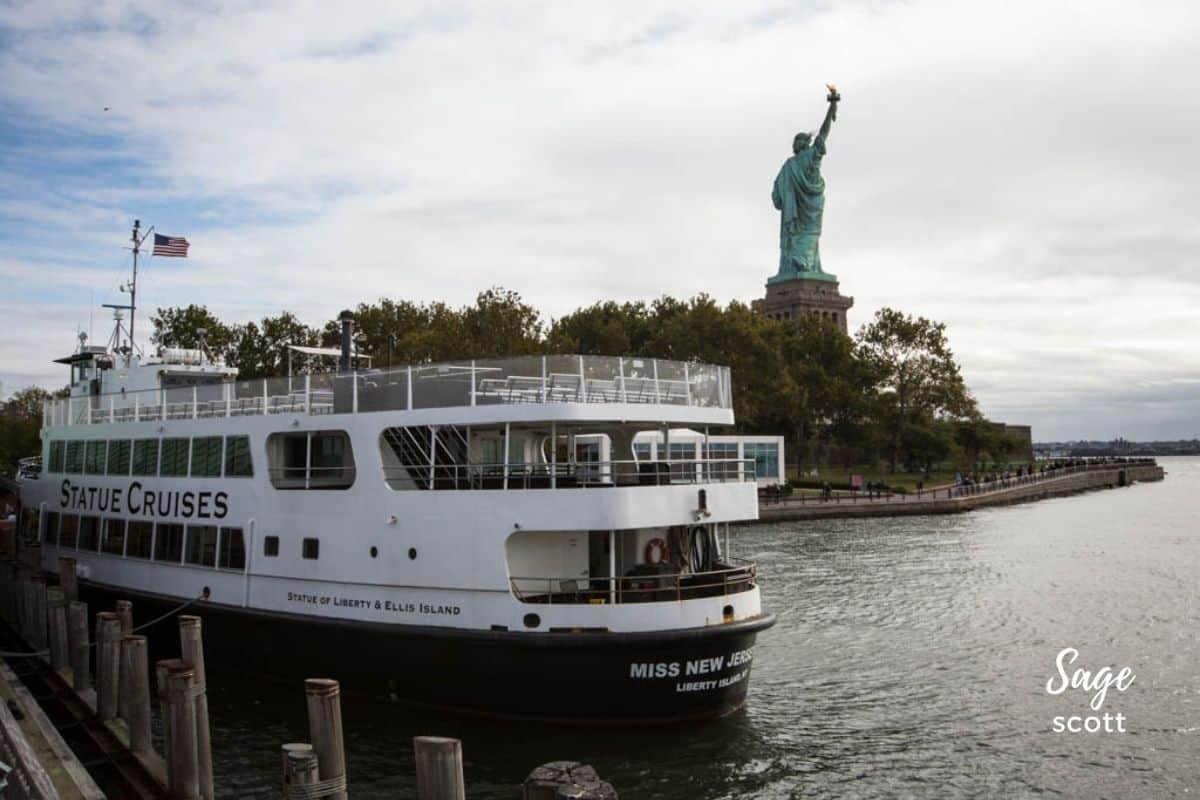
How Long is the Ferry to Ellis Island?
The Ellis Island ferry leaves from Battery Park about every half hour, and the ride to Ellis Island takes about 20 minutes. Statue Cruises is the only vendor authorized to sell tickets and provide transportation to Ellis and Liberty Islands.
Is the Ellis Island Museum Free?
Yes, there is no fee to visit the Ellis Island Museum. However, you will need to purchase a ticket for the Ellis Island Ferry. Please note that a single ferry ticket will give you access to both Ellis Island and Liberty Island.
How Long is the Ellis Island Tour?
Once you disembark on Ellis Island, you can take a self-guided tour of the National Museum of Immigration at your own pace. I recommend two to three hours to explore the museum, walk through the Registry Hall, and watch “Island of Hope, Island of Tears,” a 30-minute film about Ellis Island.
Audio tours are included in the price of your ferry ticket, and there’s even a special version for children ten and under. You can also take advantage of special ranger-guided tours or add on a special hard hat tour.
Sage Advice: Because your ferry ticket provides access to both Liberty and Ellis Islands, I recommend catching an early ferry and seeing both during a day of sightseeing in New York.

What is the Hard Hat Tour of Ellis Island?
If the National Museum of Immigration and the Registry Hall aren’t enough to satisfy your thirst for Ellis Island history, then consider taking the hard hat tour. For an additional fee, you can take a 90-minute guided tour of the abandoned Ellis Island Hospital where you’ll see the infectious and contagious disease wards, kitchen, mortuary, autopsy room, and other parts of the 750-bed hospital that was the largest Public Health Service facility in the United States in the early 20th century.
Have You Visited Ellis Island?
What did you like most? Any additional tips and tricks to pass along? Do you have a question that wasn’t answered below? Share your experiences or ask your question in the comments section below.

Looking for more information to plan your New York vacation? Check out my additional recommendations to help you plan your trip to New York including what to see and do in New York, the best places to stay in New York, where to eat in New York, and more!
Ready to Go?
Use These Helpful Links to Book Your Trip!
- Find low fares with airfarewatchdog and Skyscanner
- Book your plane ticket with Expedia or Kayak
- Or take the scenic route on an epic road trip in a rental car or an RV from Outdoorsy
- From hotels to private homes, find the perfect accommodation with Hotels.com or Vrbo
- Travel in style with a suitcase, carry-on, backpack, or handbag from eBags
- Save on tickets to attractions, sightseeing tours, and more with CityPASS, Tiqets, and Viator
- Don’t leave home without travel insurance from AXA
- Discover the sights, history, and culture of your destination with an interactive scavenger hunt
- Need something else to plan your perfect trip? Visit my travel resources page for more trusted partners. Happy wandering!
Thank you for sharing!




I loved reading all the history and information you provided about Ellis Island. We have yet to visit it or the Statue of Liberty so that is definitely on our Return to NYC bucket list though I guess it could also be a part of our New Jersey Bucket List, haha.
To think this little island named after a guy who just wanted to build a bar for his buddies became such a famous & important location to those seeking a better life in America!
I wonder if there is anyone I am related to that went through there. It would have to be on my dad’s side but that would be cool to research if there was anyone and to walk in their shoes as they became Americans.
Also, I had NO IDEA that Bob Hope wasn’t born in America!
Visiting Ellis Island in New York seems to be a perfect trip idea. It has an exciting history and it’s so intriguing which state it belongs New York and New Jersey. Great to know that the first immigrant which arrived on the island was a teenager.
There is a ton of information in this post! I had no idea Ellis Island was in both NY and NJ. Thanks so much for all the work you put into this – I enjoyed reading it!